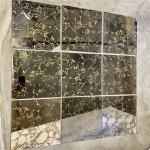How To Use Screen Mirroring Without A Smart TV
Screen mirroring, the act of wirelessly displaying the content of a smartphone, tablet, or computer screen onto a larger display, has become increasingly popular. While often associated with Smart TVs, several methods allow users to mirror their screens even without one. This article will explore various techniques and devices that facilitate screen mirroring without needing a Smart TV.
1. Using a Wireless HDMI Adapter
Wireless HDMI adapters offer a convenient solution for screen mirroring to non-smart TVs. These devices consist of two components: a transmitter that connects to the source device (smartphone, tablet, or computer) and a receiver that connects to the TV's HDMI port. The transmitter captures the screen content and wirelessly transmits it to the receiver, which then displays it on the TV. Some popular wireless HDMI technologies include Miracast and WiDi. Users should ensure compatibility between their source device and the chosen adapter.
2. Leveraging a Laptop and HDMI Cable
A simple and often readily available option involves using a laptop as a bridge between the source device and the TV. The source device’s screen is first mirrored to the laptop, either wirelessly (if both devices support Miracast or similar technologies) or via a USB cable. Subsequently, the laptop is connected to the TV using an HDMI cable. This method effectively uses the laptop as an intermediary display, mirroring the content from the source device onto the TV.
3. Utilizing Game Consoles
Certain game consoles, such as the PlayStation 4 and Xbox One, offer screen mirroring capabilities. Users can establish a connection between their compatible smartphone or tablet and the console, which then displays the mirrored content on the TV to which it is connected. Specific instructions for enabling this functionality vary depending on the console model. The console acts as a receiver, mirroring the content from the source device to the TV.
4. Employing Casting Devices like Chromecast
Casting devices like Google Chromecast offer a versatile and cost-effective solution. Chromecast plugs into the TV's HDMI port and connects to the home Wi-Fi network. Compatible apps on the source device (smartphone, tablet, or computer) can then cast their content directly to the Chromecast, which displays it on the TV. This method does not mirror the entire screen but selectively streams content from supported apps, creating a seamless viewing experience.
5. Exploring Miracast-Enabled Set-Top Boxes
Several set-top boxes on the market support Miracast technology, enabling direct screen mirroring from compatible devices. These boxes connect to the TV's HDMI port and provide a platform for mirroring without needing a smart TV. Users can connect their source device to the set-top box via Miracast, effectively turning their regular TV into a screen mirroring receiver.
6. Using DLNA-Certified Media Servers
DLNA (Digital Living Network Alliance) technology facilitates media sharing across compatible devices. Setting up a DLNA server on a computer or network-attached storage (NAS) device allows sharing media content, such as photos, videos, and music, with a DLNA-certified media player connected to the TV. Although not true screen mirroring, this method provides a convenient way to view content from a source device on a non-smart TV.
7. Connecting with a Mini PC or TV Stick
Mini PCs and TV sticks can be used to add smart functionality to non-smart TVs. These devices typically run operating systems like Android or Windows and connect to the TV via HDMI. Once connected, they provide access to a range of apps and functionalities, including screen mirroring capabilities through technologies like Miracast. They effectively transform the non-smart TV into a smart device capable of receiving mirrored content.
Choosing the optimal screen mirroring method depends on several factors, including the available devices, budget, and desired functionality. While some methods offer simple screen mirroring, others provide more advanced features like streaming content from specific apps. Users should evaluate their individual needs and preferences to determine the most suitable solution for their specific setup. It’s always recommended to verify the compatibility of chosen devices and technologies before purchasing or implementing them.

3 Ways To Mirror Iphone Tv Without Apple Istreamer

2024 Tutorial How To Mirror Phone Tv Without Wi Fi

How To Screen Mirror Iphone A Non Smart Tv

How To Mirror Iphone Tv Without Apple

How To Connect Phone Non Smart Tv Without Hdmi

Screen Mirror To Samsung Tv Android Mac Ios Free App

Mirror Iphone Screen To Samsung Tv Without Apple 2024

A Guide To Screen Mirroring From Android Samsung Lg Sony And Roku Tvs Dignited

How To Mirror Phone Screen Without Wifi 4 Simplest Way Help

Top 3 Ways To Screen Mirror Android Sony Tv








